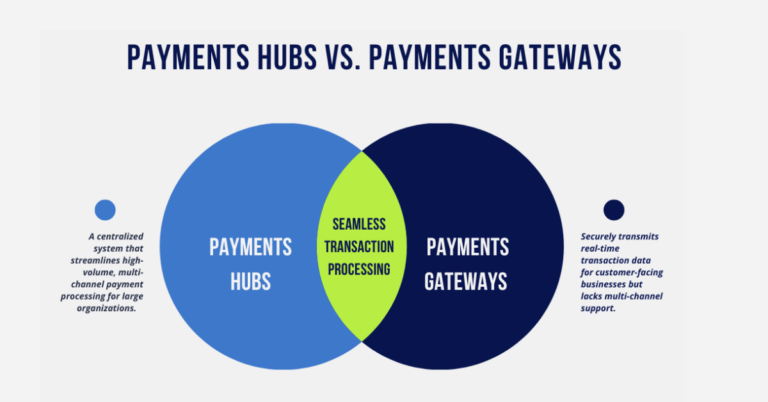*Originally published on CUInsight.com
In today’s fast-paced world, the demand for instant payments has never been higher. Credit unions, often known for their dedication to their members and their communities, are not exempt from the growing need for real-time payment solutions. The launch of the FedNow® Service has sparked a crucial conversation within credit unions about the implications and opportunities of embracing instant payments. In a recent Callahan-hosted panel discussion, credit union leaders and payments experts shared their insights into this transformative journey and what it means for credit unions and their members.
Monetizing External Transfers
The discussion commenced with Alkami’s Jeff Bucher sharing an essential use case for faster payments—external transfers. Many financial institution clients have users with accounts at multiple financial institutions, and the ability to link these external accounts to their primary account is a top priority. This consolidation allows users to keep most of their funds in one place while retaining easy access to transfer funds between accounts at other institutions.
Alkami offers a straightforward linking process through instant account verification or trial deposits/micro-deposits. Together, with Alacriti’s instant transfer technology, consumers can seamlessly transfer funds to accounts at other financial institutions through the RTP® network, the FedNow Service, or Visa Direct. By enabling these instant transfers, credit unions can explore monetization opportunities, such as offering a convenience fee, typically ranging from $1 to $1.50 or a percentage of the amount transferred.
Instant Payments Use Cases
One of the key takeaways from the discussion was the diversity of use cases for instant payments. Bucher highlighted A2A transfers as a compelling starting point, providing a simple yet impactful way for users to move funds instantly between their linked accounts at other financial institutions without waiting for ACH processing. The discussion also touched upon B2B and B2C transactions, highlighting the importance of these use cases in the evolving payments landscape.
For P2P (Person-to-Person) payments, platforms like Zelle, Venmo, PayPal, and Google Pay already serve as faster payment options. C2B (Consumer-to-Business) transactions primarily revolve around bill payments, although this category has declined over time due to the emergence of other payment options.
Debunking Common Myths About Faster Payments
The panel also took the opportunity to address common myths and misconceptions surrounding faster payments:
Myth 1: Faster Payments Are Only for Consumers
Mark Majeske from Alacriti debunked this myth, emphasizing that businesses will increasingly adopt instant payments to streamline processes like invoicing. Requests for Payments (RFPs) will become more prevalent, changing how businesses handle transactions.
Myth 2: FedNow Eliminates the Need for Other Payment Rails
Majeske clarified that FedNow and RTP are not interoperable, meaning that businesses are exploring options to use both for sending and receiving payments. Visa Direct can also fill gaps when dealing with institutions that are not on FedNow or RTP.
Myth 3: Faster Payments Will Replace ACH and Wire Transfers
Majeske assured that while instant payments may reduce the reliance on ACH and wire transfers, they won’t eliminate these traditional methods. There’s room for everyone, with instant payments focusing on speed and 24/7 availability.
Myth 4: Smaller Financial Institutions Are Incapable of Implementing Faster Payments
Cassandra Tucker from ABNB Federal Credit Union disagreed with this myth, highlighting that smaller credit unions have much to gain from embracing instant payments. These institutions can compete effectively by offering digital-first solutions and staying ahead of technological advancements.
The Importance of Identifying Use Cases
Amanda Ott from Veridian Credit Union stressed the significance of identifying an organization’s specific use cases. Before implementing instant payments, credit unions should:
- Understand their use cases
- Evaluate ROI
- Assess costs and consider potential fees
This process allows credit unions to prioritize use cases and plan for a strategic instant payments rollout over time.
Identifying use cases early on provides a roadmap for integration, ensuring a smooth transition to real-time payments. Ott emphasized the need to design a comprehensive business plan that includes priority levels for use cases and timeline goals.
Fraud Management and Current Systems
The panel addressed the issue of fraud management, emphasizing that credit unions should not assume their existing enterprise fraud systems are adequate for faster payments. Due diligence is essential to evaluate current fraud systems and tools. Panelist Amanda Ott mentioned the importance of enhancing fraud prevention and detection capabilities while not impeding the goal of faster payments.
Resource Allocation for Implementation
Cassandra Tucker challenged the notion that smaller credit unions lack the resources to implement and maintain instant payment systems. Choosing the right partner can alleviate many of the implementation challenges, making it feasible for credit unions of all sizes to embrace real-time payments.
The Urgency of Implementation
While acknowledging that credit unions have other priorities, Amanda Ott stressed the urgency of implementing instant payments. She shared how external factors, including fintech relationships, had motivated her credit union to act quickly. Alacriti’s payments hub, with its short time-to-market approach, makes it possible for credit unions to go live within 90 days of core integration.
The Future of Payment Networks
Looking ahead, the panelists expressed a belief that the money movement network would continue to expand and diversify. Rather than limiting themselves to one or two payment networks, credit unions should strive to provide a comprehensive suite of payment options. Intelligent routing and seamless backend handling of transactions would be essential to meet member needs effectively.
Blockchain and Faster Payments
Blockchain technology, often associated with cryptocurrencies, was briefly discussed as a potential tool for future payment networks. Panelist Mark Majeske highlighted that the suitability of blockchain would depend on the specific use case and its alignment with the payment network’s objectives.
Alacriti’s Payments Hub: A Solution for Credit Unions
The discussion also shed light on Alacriti’s payments hub, which offers smart routing and integration with various banking cores. This cloud-based platform allows credit unions to consolidate payment processing across multiple payment rails, including ACH, Fedwire Funds Service, TCH RTP network, Visa Direct, and the FedNow Service.
One of the notable strengths of Alacriti’s solution is its short time-to-market, enabling credit unions to go live within 90 days of core integration. Additionally, collaborative sessions with other credit unions facilitate knowledge sharing and process improvement, and credit unions have an opportunity to influence the product roadmap.
In conclusion, the journey towards embracing instant payments is critical for credit unions. As the payments landscape continues to evolve, credit unions must adapt to meet the growing demands of their members. By understanding the use cases, addressing misconceptions, and leveraging technology solutions like Alacriti’s payments hub, credit unions can position themselves at the forefront of the real-time payments revolution. The future of payments is fast, and credit unions should be ready to make it even more convenient and efficient for their members.
For more, watch the webinar, Instant Payments: A Credit Union Perspective, featuring Amanda Ott, Digital Integration Analyst at Veridian Credit Union, Cassandra Tucker, Director of Operations at ABNB Federal Credit Union, Mark Majeske, SVP Faster Payments at Alacriti, and Jeff Bucher, Senior Product Manager at Alkami.
Alacriti’s centralized payment platform, Orbipay Payments Hub, provides innovation opportunities and the ability to make smart routing decisions at the financial institution to meet their individual needs. Financial institutions can take full ownership of their payments and control their evolution with ACH, Wire, TCH’s RTP® network, Visa Direct, and the FedNow® Service, all on one cloud-based platform. To speak with an Alacriti payments expert, please contact us at (908) 791-2916 or info@alacriti.com.




